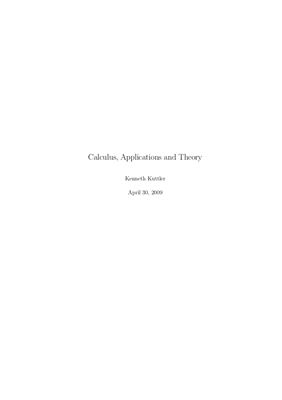Brigham Young University, 2009. - 912 pages.
Calculus consists of the study of limits of various sorts and the systematic exploitation of the completeness axiom. It was developed by physicists and engineers over a period of several hundred years in order to solve problems from the physical sciences. It is the language by which precision and quantitative predictions for many complicated problems are obtained. It is used to find lengths of curves, areas and volumes of regions which are not bounded by straight lines. It is used to predict and account for the motion of satellites. It is essential in order to solve many maximization problems and it is prerequisite material in order to understand models based on differential equations. These and other applications are discussed to some extent in this book. It is assumed the reader has a good understanding of algebra on the level of college algebra or what used to be called algebra II along with some exposure to geometry and trigonometry although the book does contain an extensive review of these things. If the optional sections and non standard sections are not included, this book is fairly short. However, there is a lot of non standard material, including the big theorems of advanced calculus.
Calculus consists of the study of limits of various sorts and the systematic exploitation of the completeness axiom. It was developed by physicists and engineers over a period of several hundred years in order to solve problems from the physical sciences. It is the language by which precision and quantitative predictions for many complicated problems are obtained. It is used to find lengths of curves, areas and volumes of regions which are not bounded by straight lines. It is used to predict and account for the motion of satellites. It is essential in order to solve many maximization problems and it is prerequisite material in order to understand models based on differential equations. These and other applications are discussed to some extent in this book. It is assumed the reader has a good understanding of algebra on the level of college algebra or what used to be called algebra II along with some exposure to geometry and trigonometry although the book does contain an extensive review of these things. If the optional sections and non standard sections are not included, this book is fairly short. However, there is a lot of non standard material, including the big theorems of advanced calculus.

